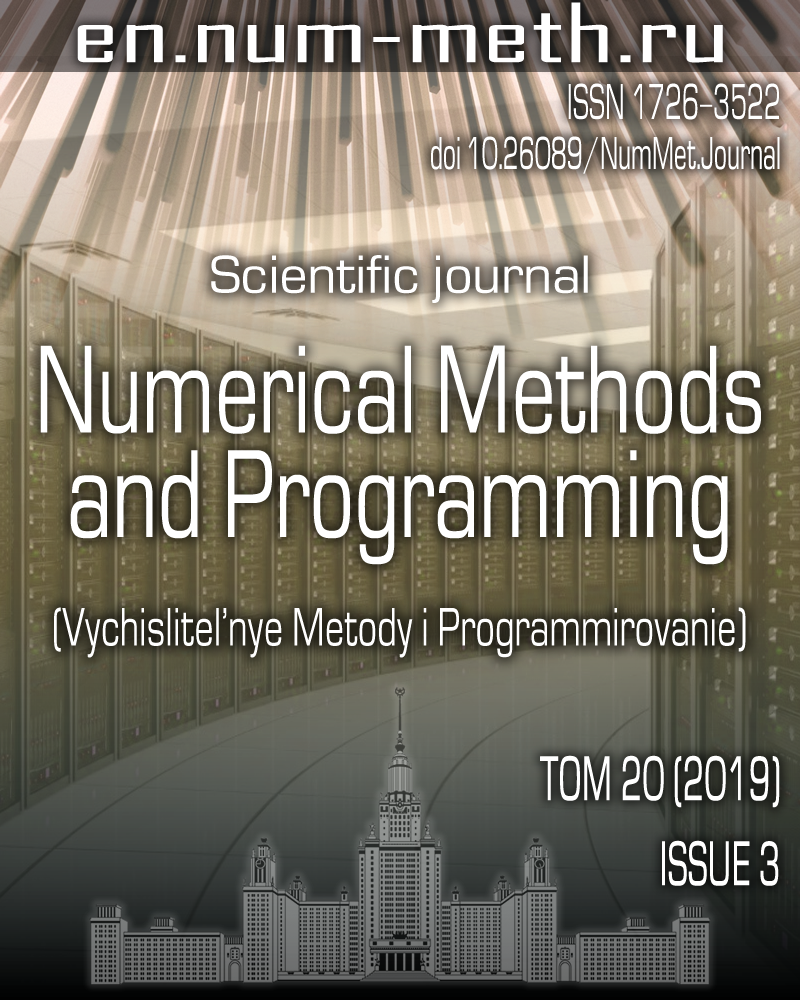DOI: https://doi.org/10.26089/NumMet.v20r324
Spectral analysis of discrete signals with high frequency resolution
Keywords:
Abstract
Algorithms of direct and inverse fast Fourier transforms are discussed. These algorithms allow one to process discrete signals with high frequency resolution, including with a small number of frequency samples, and to receive the frequency responses with a set length of frequencies greater than the length of the original discrete signal. The time complexity of the developed algorithms for the direct and inverse FFT is O(N R log2N), where R is the frequency resolution of the spectral characteristic (the ratio of the length of a set of frequencies to the length N of a set of signal samples). The developed methods allow one to increase the resolution of systems of digital signal processing and can be implemented in electronic devices and in software for spectral analysis.
Published
Issue
Section
References
- A. P. Zubakov, “Fourier and Wavelet-Transformations in the Problem of Speech Identification,” Vestn. Tambov Gos. Univ. Ser. Estestven. Tekhnich. Nauki 15 (6), 1893-1899 (2010).
- A. N. Golubinsky and R. A. Astashov, “On Time-and-Frequency Resolution of the Short-Term Fourier Analysis and the Continuous Wavelet Analysis at Speech Signals,” Vestn. Voronezh Inst. Ross. MVD, No. 3, 4-11 (2013).
- Polyphase FFT.
http://www.dsplib.ru/content/polyphasefft/polyphase.html . Cited June 22, 2019. - L. R. Rabiner and B. Gold, Theory and Application of Digital Signal Processing (Prentice-Hall, Englewood Cliffs, 1975; Mir, Moscow, 1978).
- V. I. Gadzikovskii, Digital Signal Processing (SOLON Press, Moscow, 2013) [in Russian].
- D. F. Vydrin, Yu. R. Abzalilova, and A. K. Vdovin, “Fast Fourier Transformation at Digital Signal Processing,” Teoriya Praktika Sovremen. Nauki, No. 2, 161-163.
- G. O. Bokk, “Optimization of the FFT Assembler Code Oriented on the Processing of OFDM Signals of Cellular Communication Networks,” Ekonomika Kachestvo Sistem Svyazi, No. 4, 40-51 (2017).
- A. A. Burtsev, “Optimization of Algorithms of fast Fourier Transform for the Specialized Vector Coprocessor Taking into Account Hierarchical Structure of Memory,” Tr. Inst. Sistemn. Issled., Ross. Akad. Nauk 7 (4), 83-95 (2017).
- P. A. Ishin, “Optimization of Fourier Transform for Elbrus Architecture,” Sovremen. Inform. Tekhnol. IT-Obrazov., No 7, 683-691 (2011).
- N. A. Galanina and N. N. Ivanova, “Computing Aspects of Fast Fourier Transform and Issues of Its FPGA Realization,” Vestn. Chuvash Gos. Univ., No. 3, 172-181 (2018).
- A. A. Kapitanov and P. S. Ostapenkov, “The High-Speed Floating-Point Fast Fourier Transforms Core Implementation Based on Field-Programmable Gate Arryas,” Vestn. Mosk. Gos. Energetich. Inst., No. 2, 92-97 (2015).

